







































































Hestkærvej, Grindsted, Denmark
ASKING PRICE: 780,000 EUROS
About Us
There are several playgrounds, petting zoo, mini golf, pool table, ping pong, lots of gaming consoles and much much more. We promise you a stay you and your family never will forget.
We can also offer the luxury pool house at Vejers Strand.
Apartments, rooms, family tents and camping
At our r ooms we have 11 large family rooms / apartments, each with their own school theme. In the summer we can also offer a range of furnished family tents.
ooms we have 11 large family rooms / apartments, each with their own school theme. In the summer we can also offer a range of furnished family tents.
We also have a small campsite with space for tents, caravans, etc.
Scroll down to view all rooms / apartments / tents and facilities, as well as an overview map of our place.
(1) Chemistry – 6 pers. – 78 m2
(2) Gym Class – 6 pers. – 62 m2
(3) Music – 6 pers. – 42 m2
(4) Geography – 6 pers. – 42 m2
(5) Biology – 6 pers. – 33 m2
(6) Wood works – 6 pers. – 33 m2
(7) Arts and craft – 8 pers. – 68 m2
(8) Math – 4 pers. – 33 m2
(9) History – 6 pers. – 46 m2
(10) Preschool – 8 pers. – 56 m2
(11) Gym Play Room – 12 pers. – 98 m2 – The ultimate playroom
(12) Principal´s Residence – 300 m3 deluxe apartment – 16 pers. – 300 m2
News 2021! Air mattresses have been replaced with beds
Facilities & Free Excursions
We often find that our guests are very surprised at how large and fun our rooms are, and not least how many facilities we have for both children and adults, so here we will try to make a little more clear.
As a guest at our Family Rooms you do not have to go anywhere else, as we have so many facilities for both children and adults, and you can easily stay here for several days, without getting bored.
Here below is a small list of the many facilities we have here. Further down you can read a bit about the many possible free excursions nearby, when the trip does not have to go to Legoland or similar.
Facilities for children
We have more than 30 different facilities for children!
Facilities for parents
Free/cheap excursions for the whole family, right near us
Nature experiences, walks, geocaching, delightful treats, swimming lake / beach, shopping and much more, right nearby and most of it is completely free.
Further Information
Our Family Rooms. The place where the children can play while the parents relax.
We have combined some of the best from the B&B, Camping, holiday resort and Hostel world, to a resort that looks like no other. Here is room for the large family, in our very large family rooms, apartments and family tents. All filled with lots of different amenities. The location of our resort near Legoland, as well as Lalandia, Lego House, Wow Park, Zoo etc. in and around Billund, means that you´re never far away from other experiences, than what our place offers. In addition, the area can also offer a wealth of unforgettable nature experiences.
Below you´ll find some very useful information which should be read.
Breakfast
Unfortunately, we are unable to offer breakfast on site, due to the difficult situation we are in with our child and because we do not have enough staff to handle this. But it is possible to make your own breakfast either in the room/apartment/tent or in our large communal kitchen in the middle building, as well as the outdoor kitchen, which is open in the summer.
There is a supermarket just 800 meters from here. where you can get fresh bread and everything else you need for breakfast or all other meals.
Linen and towels
You can either bring your own sheets, linen and towels or rent our packages.
Linen/towel package, consists of sheets, linens and a towel.
Linen/towel packages can be found different places on the hallway. You´ll find info in the room/tent where to find it.
If you bring your own sheets, the bed sizes are:
King size bed (2 single beds 90 x 200 cm. put together with clamps): 180 x 200 cm.
Bunk bed (two storey bunk bed): 90 x 200 cm.
Sofa bed: 150 x 200 cm.
Beds in the tents: 2 pcs. of 120 x 200 cm and 1 pc. of 70 x 200 cm
Duvets are 200 cm long and pillows are ordinary size (you can also borrow duvets and pillows for the tents)
Facilities and attractions
Our place is especially made for families with children. We have a lot of play and rekreationel facilities, so that your children can play both indoors and outdoors, while parents relax in our quiet surroundings.
Close by we have:
LEGOLAND – LEGO House – Lalandia – Wow Park – Zoo – Big swimming lake – Fishing lake
Bus
Coming with bus is very easy if your staying at our Family Rooms.
You will receive a BE HAPPY PASS when you arrive. It´s a discount card for a lot of different attractions and restaurants in our area.
TV and Playstation
There´s TV and PlayStation in every room and apartment, where you can stream movie, series and play games. We have a TV / entertainment room, where it’s possible to watch regular TV and relax in the evening. We also have a dining room, where you can watch TV.
WIFI
We have free WiFi, which covers most of the property.
Parking
We have free parking close to the rooms and there´s no need for booking a parking spot, as it is a very large parking lot.
Kitchen and grill
If you want to cook your own food, morning, dinner or evening, you can use one of our communal kitchens. Here you´ll find the most necessary kitchen equipment, as well as refrigerator space (there´s refrigerators in all apartments, rooms and tents). The apartments/rooms called Chemistry, Gym Class, Gym Play Room, Music, Geography, Math, Preschool and Arts and Craft all have their own kitchen or kitchette, but are of course also allowed to use the common kitchens. You are also very welcome to use one of our barbecues.
Grindsted
Grindsted, with a population of 9,750 (1 January 2022), is the municipal seat and largest town of Billund Municipality, Denmark and belongs to the Region of Southern Denmark. It is located 42 km west of the major regional city of Vejle and 49 km northeast of the major harbour city Esbjerg.
History
Grindsted is first mentioned in the 14th century, and for several centuries was just a village on the heath. Until the middle of the 19th century, Grindsted was a small, remote, distinctly moorland village. The construction of the main road Vejle — Grindsted — Varde in 1864 brought some progress, which was increased by the later significant cultural works in the area, but it was not until the many railway installations during the First World War that caused the strong development which made Grindsted an important railway hub.
Education
Grindsted has both private and public primary schools, upper secondary education and vocational education.
Industry
In 1924 , the chemical factory Grindstedværket was built in the city, and the industrial community gradually grew up, so that both the cement and textile industries came to the city. One of the main industries today is the DuPont factory, which traces its roots back to the original chemical factory named Grindstedværket (Grindsted Products) founded by the Lundsgaard brothers. Through acquisitions by De Danske Spritfabrikker, it became part of the Danisco corporation, but Danisco was acquired by DuPont in 2011; however, the factory only changed name on 14 May 2012. Products from Grindsted are still marketed under the Danisco logo and name.
Sport
Grindsted Speedway Klub compete in the Danish Speedway League and the track called the Billund Municipality Stadium is located at Blåbjergvej 1, 7200.
Denmark
Denmark is a Nordic constituent country in Northern Europe. It is the metropolitan part of and most populous constituent of the Kingdom of Denmark, a constitutionally unitary state that includes the autonomous territories of the Faroe Islands and Greenland in the North Atlantic Ocean. Metropolitan Denmark is the southernmost of the Scandinavian countries, lying south-west and south (Bornholm and Ertholmene) of Sweden, south of Norway, and north of Germany, with which it shares a short and only land border.
As of 2013, the Kingdom of Denmark, including the Faroe Islands and Greenland, has a total of 1,419 islands above 100 square metres (1,100 sq ft); 443 of which have been named and of which 78 are inhabited.Spanning a total area of 42,943 km2 (16,580 sq mi), metropolitan Denmark consists of the northern part of the Jutland peninsula and an archipelago of 406 islands. Of these, the most populated island is Zealand, on which the capital Copenhagen is situated, followed by Funen, the North Jutlandic Island, and Amager. Denmark's geography is characterised by flat, arable land, sandy coasts, low elevation, and a temperate climate. It had a population of 5.935 million (1 February 2023), of which 800,000 (2 million in the wider area) live in the capital and largest city, Copenhagen. Denmark exercises hegemonic influence in the Danish Realm, devolving powers to handle internal affairs. Home rule was established in the Faroe Islands in 1948 and in Greenland in 1979; the latter obtained further autonomy in 2009.
The unified Kingdom of Denmark emerged in the eighth century as a proficient maritime power amid the struggle for control of the Baltic Sea. In 1397, it joined Norway and Sweden to form the Kalmar Union, which persisted until the latter's secession in 1523. The remaining Kingdom of Denmark–Norway endured a series of wars in the 17th century that resulted in further territorial cessions to the Swedish Empire. Following the Napoleonic Wars, Norway was absorbed into Sweden, leaving Denmark with the Faroe Islands, Greenland, and Iceland. A surge of nationalist movements in the 19th century were defeated in the First Schleswig War of 1848, though the Second Schleswig War of 1864 resulted in further territorial losses to Prussia. The period saw the adoption of the Constitution of Denmark on 5 June 1849, ending the absolute monarchy that was established in 1660 and introducing the current parliamentary system.
An industrialised exporter of agricultural produce in the second half of the 19th century, Denmark introduced social and labour-market reforms in the early 20th century, which formed the basis for the present welfare state model and advanced mixed economy. Denmark remained neutral during World War I but regained the northern half of Schleswig in 1920. Danish neutrality was violated in World War II following a swift German invasion in April 1940. During occupation, a resistance movement emerged in 1943 while Iceland declared independence in 1944; Denmark was liberated in May 1945. Soviet forces left Bornholm 5 April 1946. In 1973, Denmark, together with Greenland but not the Faroes, became a member of what is now the European Union, but negotiated certain opt-outs, such as retaining its own currency, the krone.
Denmark is a developed country with a high standard of living. Denmark is a founding member of NATO, the Nordic Council, the OECD, OSCE, and the United Nations; it is also part of the Schengen Area. Denmark maintains close political, cultural, and linguistic ties with its Scandinavian neighbours, with the Danish language being partially mutually intelligible with both Norwegian and Swedish.
Etymology
The etymology of the name "Denmark", the relationship between "Danes" and "Denmark", and the emergence of Denmark as a unified kingdom are topics of continuous scholarly debate. This is centred primarily on the prefix "Dan" and whether it refers to the Dani or a historical person Dan and the exact meaning of the -"mark" ending.
Most etymological dictionaries and handbooks derive "Dan" from a word meaning "flat land", related to German Tenne "threshing floor", English den "cave". The element mark is believed to mean woodland or borderland (see marches), with probable references to the border forests in south Schleswig.
The first recorded use of the word Danmark within Denmark itself is found on the two Jelling stones, which are runestones believed to have been erected by Gorm the Old (c. 955) and Harald Bluetooth (c. 965). The larger of the two stones is popularly cited as the "baptismal certificate" (dåbsattest) of Denmark, though both use the word "Denmark", in the accusative ᛏᛅᚾᛘᛅᚢᚱᚴ tanmaurk ([danmɒrk]) on the large stone, and the genitive ᛏᛅᚾᛘᛅᚱᚴᛅᚱ "tanmarkar" (pronounced [danmarkaɽ]) on the small stone, while the dative form tąnmarku (pronounced [danmarkʊ]) is found on the contemporaneous Skivum stone. The inhabitants of Denmark are there called tani ([danɪ]), or "Danes", in the accusative.
History
Prehistory
The earliest archaeological finds in Denmark date back to the Eem interglacial period from 130,000 to 110,000 BC. Denmark has been inhabited since around 12,500 BC and agriculture has been evident since 3900 BC.
The Nordic Bronze Age (1800–600 BC) in Denmark was marked by burial mounds, which left an abundance of findings including lurs and the Sun Chariot.
During the Pre-Roman Iron Age (500 BC – AD 1), native groups began migrating south, and the first tribal Danes came to the country between the Pre-Roman and the Germanic Iron Age, in the Roman Iron Age (AD 1–400). The Roman provinces maintained trade routes and relations with native tribes in Denmark, and Roman coins have been found in Denmark. Evidence of strong Celtic cultural influence dates from this period in Denmark and much of North-West Europe and is among other things reflected in the finding of the Gundestrup cauldron.
The tribal Danes came from the east Danish islands (Zealand) and Scania and spoke an early form of North Germanic. Historians believe that before their arrival, most of Jutland and the nearest islands were settled by tribal Jutes. The Jutes migrated to Great Britain eventually, some as mercenaries of Brythonic King Vortigern, and were granted the south-eastern territories of Kent, the Isle of Wight and other areas, where they settled. They were later absorbed or ethnically cleansed by the invading Angles and Saxons, who formed the Anglo-Saxons. The remaining Jutish population in Jutland assimilated in with the settling Danes.
A short note about the Dani in Getica by the historian Jordanes is believed to be an early mention of the Danes, one of the ethnic groups from whom modern Danes are descended. The Danevirke defence structures were built in phases from the 3rd century forward and the sheer size of the construction efforts in AD 737 are attributed to the emergence of a Danish king. A new runic alphabet was first used around the same time and Ribe, the oldest town of Denmark, was founded about AD 700.
Viking and Middle Ages
From the 8th to the 10th century the wider Scandinavian region was the source of Vikings. They colonised, raided, and traded in all parts of Europe. The Danish Vikings were most active in the eastern and southern British Isles and Western Europe. They settled in parts of England (known as the Danelaw) under King Sweyn Forkbeard in 1013, and in France where Danes and Norwegians were allowed to settle in what would become Normandy in exchange of allegiance to Robert I of France with Rollo as first ruler. Some Anglo-Saxon pence of this period have been found in Denmark.
Denmark was largely consolidated by the late 8th century and its rulers are consistently referred to in Frankish sources as kings (reges). Under the reign of Gudfred in 804 the Danish kingdom may have included all the lands of Jutland, Scania and the Danish islands, excluding Bornholm.
The extant Danish monarchy traces its roots back to Gorm the Old, who established his reign in the early 10th century. As attested by the Jelling stones, the Danes were Christianised around 965 by Harald Bluetooth, the son of Gorm. It is believed that Denmark became Christian for political reasons so as not to get invaded by the Holy Roman Empire. A rising Christian power in Europe, the Holy Roman Empire was an important trading partner for the Danes. As a deterrent against this threat, Harald built six fortresses around Denmark called Trelleborg and built a further Danevirke. In the early 11th century, Canute the Great won and united Denmark, England, and Norway for almost 30 years with a Scandinavian army.
Throughout the High and Late Middle Ages, Denmark also included Skåneland (the areas of Scania, Halland, and Blekinge in present-day south Sweden) and Danish kings ruled Danish Estonia, as well as the duchies of Schleswig and Holstein. Most of the latter two now form the state of Schleswig-Holstein in northern Germany.
In 1397, Denmark entered into a personal union with Norway and Sweden, united under Queen Margaret I. The three countries were to be treated as equals in the union. However, even from the start, Margaret may not have been so idealistic—treating Denmark as the clear "senior" partner of the union. Thus, much of the next 125 years of Scandinavian history revolves around this union, with Sweden breaking off and being re-conquered repeatedly. The issue was for practical purposes resolved on 17 June 1523, as Swedish King Gustav Vasa conquered the city of Stockholm. The Protestant Reformation spread to Scandinavia in the 1530s, and following the Count's Feud civil war, Denmark converted to Lutheranism in 1536. Later that year, Denmark entered into a union with Norway.
Early modern history (1536–1849)
After Sweden permanently broke away from the personal union, Denmark tried on several occasions to reassert control over its neighbour. King Christian IV attacked Sweden in the 1611–1613 Kalmar War but failed to accomplish his main objective of forcing it to return to the union. The war led to no territorial changes, but Sweden was forced to pay a war indemnity of 1 million silver riksdaler to Denmark, an amount known as the Älvsborg ransom. King Christian used this money to found several towns and fortresses, most notably Glückstadt (founded as a rival to Hamburg) and Christiania. Inspired by the Dutch East India Company, he founded a similar Danish company and planned to claim Ceylon as a colony, but the company only managed to acquire Tranquebar on India's Coromandel Coast. Denmark's large colonial aspirations included a few key trading posts in Africa and India. While Denmark's trading posts in India were of little note, it played an important role in the highly lucrative Atlantic slave trade, through its trading outposts in Fort Christiansborg in Osu, Ghana through which 1.5 million slaves were traded. While the Danish colonial empire was sustained by trade with other major powers, and plantations – ultimately a lack of resources led to its stagnation.
In the Thirty Years' War, Christian tried to become the leader of the Lutheran states in Germany but suffered a crushing defeat at the Battle of Lutter. The result was that the Catholic army under Albrecht von Wallenstein was able to invade, occupy, and pillage Jutland, forcing Denmark to withdraw from the war. Denmark managed to avoid territorial concessions, but King Gustavus Adolphus' intervention in Germany was seen as a sign that the military power of Sweden was on the rise while Denmark's influence in the region was declining. Swedish armies invaded Jutland in 1643 and claimed Scania in 1644. In the 1645 Treaty of Brømsebro, Denmark surrendered Halland, Gotland, the last parts of Danish Estonia, and several provinces in Norway.
Seeing an opportunity to tear up the Treaty of Brømsebro, King Frederick III of Denmark, in 1657, declared war on Sweden, the latter being deeply involved in the Second Northern War (1655–1660), and marched on Bremen-Verden. This led to a massive Danish defeat as the armies of King Charles X Gustav of Sweden conquered Jutland and, following the Swedish March across the frozen Danish straits, occupied Funen and much of Zealand before signing the Peace of Roskilde in February 1658, which gave Sweden control of Scania, Blekinge, Bohuslän, Trøndelag, and the island of Bornholm. Charles X Gustav quickly regretted not having ruined Denmark and in August 1658, he launched a second attack on Denmark, conquered most of the Danish islands, and began a two-year-long siege of Copenhagen. King Frederick III actively led the defence of the city, rallying its citizens to take up arms, and repelled the Swedish attacks. The siege ended following the death of Charles X Gustav in 1660. In the ensuing peace settlement, Denmark managed to maintain its independence and regain control of Trøndelag and Bornholm. Attaining great popularity following the war, Frederick III used this to disband the elective monarchy in favour of absolute monarchy, which lasted until 1848 in Denmark.
Denmark tried but failed to regain control of Scania in the Scanian War (1675–1679). After the Great Northern War (1700–21), Denmark managed to regain control of the parts of Schleswig and Holstein ruled by the house of Holstein-Gottorp in the 1720 Treaty of Frederiksborg and the 1773 Treaty of Tsarskoye Selo, respectively. Denmark prospered greatly in the last decades of the 18th century due to its neutral status allowing it to trade with both sides in the many contemporary wars. In the Napoleonic Wars, Denmark traded with both France and the United Kingdom and joined the League of Armed Neutrality with Russia, Sweden, and Prussia. The British considered this a hostile act and attacked Copenhagen in 1801 and 1807, in one case carrying off the Danish fleet, in the other, burning large parts of the Danish capital. This led to the so-called Danish-British Gunboat War. British control of the waterways between Denmark and Norway proved disastrous to the union's economy and in 1813 Denmark–Norway went bankrupt.
The union was dissolved by the Treaty of Kiel in 1814; the Danish monarchy "irrevocably and forever" renounced claims to the Kingdom of Norway in favour of the Swedish king. Denmark kept the possessions of Iceland (which retained the Danish monarchy until 1944), the Faroe Islands and Greenland, all of which had been governed by Norway for centuries. Apart from the Nordic colonies, Denmark continued to rule over Danish India from 1620 to 1869, the Danish Gold Coast (Ghana) from 1658 to 1850, and the Danish West Indies from 1671 to 1917.
Constitutional monarchy (1849–present)
Liberal movement and cession of Schleswig and Holstein
A nascent Danish liberal and national movement gained momentum in the 1830s; after the European Revolutions of 1848, Denmark peacefully became a constitutional monarchy on 5 June 1849. A new constitution established a two-chamber parliament. Denmark faced war against both Prussia and Austrian Empire in what became known as the Second Schleswig War, lasting from February to October 1864. Denmark was defeated and obliged to cede Schleswig and Holstein to Prussia. This loss came as the latest in the long series of defeats and territorial losses that had begun in the 17th century. After these events, Denmark pursued a policy of neutrality in Europe.
Industrialisation
Industrialisation came to Denmark in the second half of the 19th century.[48] The nation's first railways were constructed in the 1850s, and improved communications and overseas trade allowed industry to develop in spite of Denmark's lack of natural resources. Trade unions developed, starting in the 1870s. There was a considerable migration of people from the countryside to the cities, and Danish agriculture became centred on the export of dairy and meat products.
Denmark in World War I
Denmark maintained its neutral stance during World War I. After the defeat of Germany, the Versailles powers offered to return the region of Schleswig-Holstein to Denmark. Fearing German irredentism, Denmark refused to consider the return of the area without a plebiscite; the two Schleswig Plebiscites took place on 10 February and 14 March 1920, respectively. On 10 July 1920, Northern Schleswig was recovered by Denmark, thereby adding some 163,600 inhabitants and 3,984 square kilometres (1,538 sq mi). The country's first social democratic government took office in 1924.
German non-aggression pact and invasion
In 1939 Denmark signed a 10-year non-aggression pact with Nazi Germany but Germany invaded Denmark on 9 April 1940 and the Danish government quickly surrendered. World War II in Denmark was characterised by economic co-operation with Germany until 1943, when the Danish government refused further co-operation and its navy scuttled most of its ships and sent many of its officers to Sweden, which was neutral. The Danish resistance performed a rescue operation that managed to evacuate several thousand Jews and their families to safety in Sweden before the Germans could send them to death camps. Some Danes supported Nazism by joining the Danish Nazi Party or volunteering to fight with Germany as part of the Frikorps Danmark. Iceland severed ties with Denmark and became an independent republic in 1944; Germany surrendered in May 1945. In 1948, the Faroe Islands gained home rule. In 1949, Denmark became a founding member of NATO.
Denmark was a founding member of European Free Trade Association (EFTA). During the 1960s, the EFTA countries were often referred to as the Outer Seven, as opposed to the Inner Six of what was then the European Economic Community (EEC). In 1973, along with Britain and Ireland, Denmark joined the European Economic Community (now the European Union) after a public referendum. The Maastricht Treaty, which involved further European integration, was rejected by the Danish people in 1992; it was only accepted after a second referendum in 1993, which provided for four opt-outs from policies. The Danes rejected the euro as the national currency in a referendum in 2000. Greenland gained home rule in 1979 and was awarded self-determination in 2009. Neither the Faroe Islands nor Greenland are members of the European Union, the Faroese having declined membership of the EEC in 1973 and Greenland in 1986, in both cases because of fisheries policies.
Constitutional change in 1953 led to a single-chamber parliament elected by proportional representation, female accession to the Danish throne, and Greenland becoming an integral part of Denmark. The centre-left Social Democrats led a string of coalition governments for most of the second half of the 20th century, introducing the Nordic welfare model. The Liberal Party and the Conservative People's Party have also led centre-right governments.
Geography
Located in Northern Europe, Denmark consists of the northern part of the Jutland peninsula and an archipelago of 406 islands. Of these, the largest island is Zealand, on which the capital Copenhagen is situated, followed by the North Jutlandic Island, Funen, and Lolland. The island of Bornholm is located east of the rest of the country, in the Baltic Sea. Many of the larger islands are connected by bridges; a bridge-tunnel across the Øresund connects Zealand with Sweden; the Great Belt Fixed Link connects Funen with Zealand; and the Little Belt Bridge connects Jutland with Funen. Ferries or small aircraft connect to the smaller islands. The four cities with populations over 100,000 are the capital Copenhagen on Zealand; Aarhus and Aalborg in Jutland; and Odense on Funen.
The country occupies a total area of 42,943.9 square kilometres (16,581 sq mi). The area of inland water is 700 km2 (270 sq mi), variously stated as from 500 to 700 km2 (193–270 sq mi). Lake Arresø northwest of Copenhagen is the largest lake. The size of the land area cannot be stated exactly since the ocean constantly erodes and adds material to the coastline, and because of human land reclamation projects (to counter erosion). Post-glacial rebound raises the land by a bit less than 1 cm (0.4 in) per year in the north and east, extending the coast. A circle enclosing the same area as Denmark would be 234 kilometres (145 miles) in diameter with a circumference of 736 km (457 mi) (land area only:232.33 km (144.36 mi) and 730 km (454 mi) respectively). It shares a border of 68 kilometres (42 mi) with Germany to the south and is otherwise surrounded by 8,750 km (5,437 mi) of tidal shoreline (including small bays and inlets). No location in Denmark is farther from the coast than 52 km (32 mi). On the south-west coast of Jutland, the tide is between 1 and 2 m (3.28 and 6.56 ft), and the tideline moves outward and inward on a 10 km (6.2 mi) stretch. Denmark's territorial waters total 105,000 square kilometres (40,541 square miles).
Denmark's northernmost point is Skagen point (the north beach of the Skaw) at 57° 45' 7" northern latitude; the southernmost is Gedser point (the southern tip of Falster) at 54° 33' 35" northern latitude; the westernmost point is Blåvandshuk at 8° 4' 22" eastern longitude; and the easternmost point is Østerskær at 15° 11' 55" eastern longitude. This is in the small Ertholmene archipelago 18 kilometres (11 mi) north-east of Bornholm. The distance from east to west is 452 kilometres (281 mi), from north to south 368 kilometres (229 mi).
The country is flat with little elevation, having an average height above sea level of 31 metres (102 ft). The highest natural point is Møllehøj, at 170.86 metres (560.56 ft). Although this is by far the lowest high point in the Nordic countries and also less than half of the highest point in Southern Sweden, Denmark's general elevation in its interior is generally at a safe level from rising sea levels. A sizeable portion of Denmark's terrain consists of rolling plains whilst the coastline is sandy, with large dunes in northern Jutland. Although once extensively forested, today Denmark largely consists of arable land. It is drained by a dozen or so rivers, and the most significant include the Gudenå, Odense, Skjern, Suså and Vidå—a river that flows along its southern border with Germany.
The Kingdom of Denmark includes two overseas territories, both well to the west of Denmark: Greenland, the world's largest island, and the Faroe Islands in the North Atlantic Ocean. These territories are self-governing under their own parliaments (the Løgting and Inatsisartut) and form, together with continental Denmark, part of the Danish Realm.
Climate
Denmark has a temperate climate, characterised by mild winters, with mean temperatures in January of 1.5 °C (34.7 °F), and cool summers, with a mean temperature in August of 17.2 °C (63.0 °F).The most extreme temperatures recorded in Denmark, since 1874 when recordings began, was 36.4 °C (97.5 °F) in 1975 and −31.2 °C (−24.2 °F) in 1982. Denmark has an average of 179 days per year with precipitation, on average receiving a total of 765 millimetres (30 in) per year; autumn is the wettest season and spring the driest.[57] The position between a continent and an ocean means that the weather is often unstable.
Because of Denmark's northern location, there are large seasonal variations in daylight. There are short days during the winter with sunrise coming around 8:45 am and sunset 3:45 pm (standard time), as well as long summer days with sunrise at 4:30 am and sunset at 10 pm (daylight saving time).
Cliff Jacobs (Nat Dpl Hotel Man (UJ). MPRE. GA Level 5 TEFL) Managing Principal / CEO Exquisite Hotel Consultants (Pty) Ltd Mobile: +27 (0) 84 413 1071 / +27 (0) 61 716 6951 Email: cliff@exquisitehotelconsultants.com Web: https://www.exquisitehotelconsultants.com © All rights reserved Terms and Conditions apply Scroll down to view our Hospitality Properties and Businesses for sale or lease or lease-to-buy or partnership arrangement or management agreement arrangement.



 Name: BondExcel
Name: BondExcel Mortgage Origination
We interface with all of the major banks in South Africa to ensure that you get the right home loan solution at the best possible rate.
Looking forward to assist you with your home loan application!
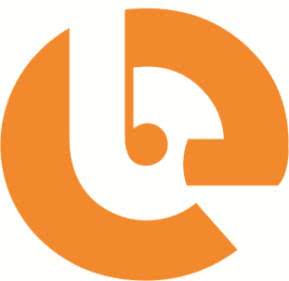 Name: Businessentials For Hospitality
Name: Businessentials For Hospitality Hospitality Consulting, Accounting, Bookkeeping and Payroll Services
 Name: Capital Efficiency Group
Name: Capital Efficiency Group Corporate Finance, Tax & Accounting and Treasury Services.
Attorneys, Notaries and Conveyancers
 Name: D E I R D R E R E N N I E R S Interior Design
Name: D E I R D R E R E N N I E R S Interior Design Interior Design
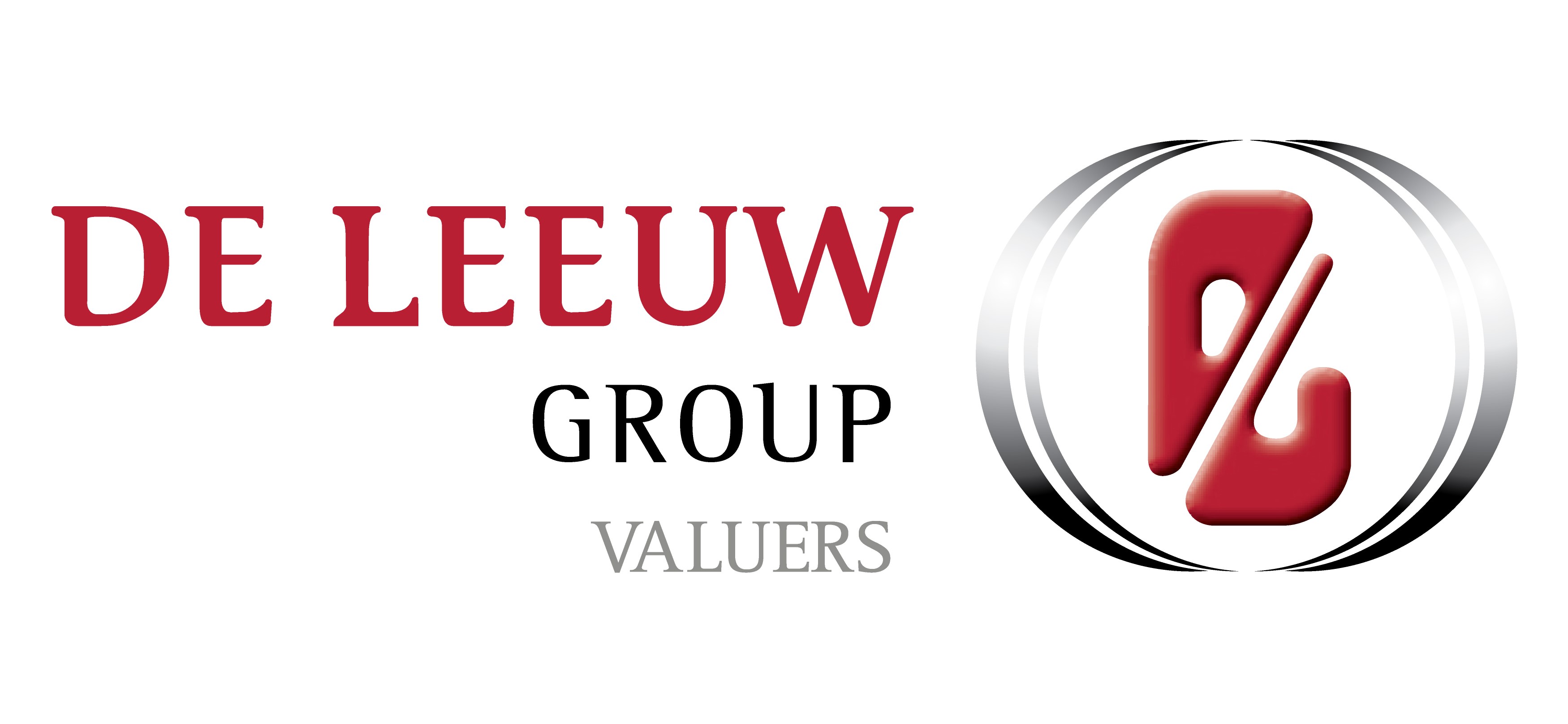 Name: De Leeuw Valuers Cape Town
Name: De Leeuw Valuers Cape Town Property Valuation Services
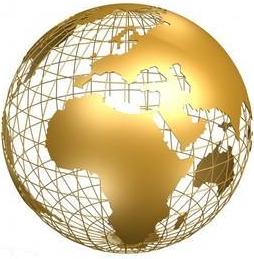 Name: E C Mobility
Name: E C Mobility International property, law and immigration
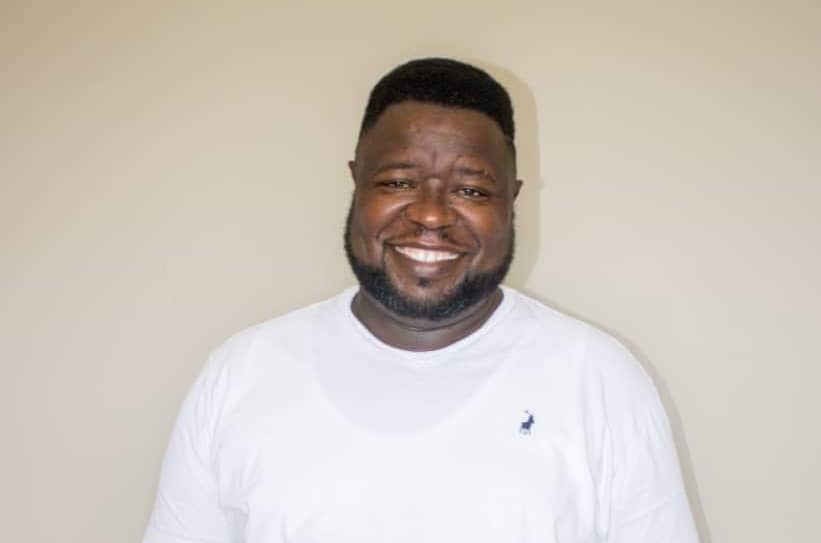 Name: Edward Tokolo Kasete
Name: Edward Tokolo Kasete Real Estate Specialist - Our Associate in Namibia
We offer an international platform of specialist hospitality property and/or business brokering services by listing and marketing for sale or lease or by investment partner arrangement or management agreement arrangement of a variety of hospitality products (i.e. hotels, resorts, boutique hotels, guest houses, guest lodges, B&Bs, game resorts, wine farms, yachts, cruise liners, etc) through our association with EC Mobility (in Portugal and Spain), BON Hotels (Africa), Giovanni Conti (Italy, North and East Africa, Sri Lanka), Nuno Boquinhas (Portugal, Azores, Madeira, Mozambique), Property 24, Seeff Property Services, Harcourts, Realnet, RE/MAX, Dogon Property Group, Rawson Estates, among many other prominent commercial estate agencies throughout Southern Africa - and now we are entering other African Countries on the East and West Coasts of Africa and moving further abroad! To date, Exquisite Hotel Consultants has a presence in over 80 countries - and counting...
Working with the above-mentioned agencies and others provides the largest possible reach nationally and internationally for all prospective buyers and sellers wishing to enter or exit the Hospitality Industry.
Sister websites have been opened in the following countries: United Kingdom: see www.exquisitehotelconsultants.co.uk, and in Germany: see www.exquisitehotelconsultants.de, and in the United States of America: see www.exquisitehotelconsultants.us.
Please note that several of our hospitality properties and/or businesses for sale or lease or through business partnership arrangements or management contracts are officially "Off-Market" - mainly for privacy reasons. Therefore, they are not listed as part of our hospitality properties/businesses for sale or lease stock. Please contact me for further details.
Should you be considering to sell or buy or lease or obtain a partnership arrangement or management agreement arrangement for your hotel, boutique hotel, resort, guest house, B&B, game lodge, game resort, guest farm, yacht or cruise liner etc, I would be most pleased to provide you with further details of our way of working to effectively market and sell your property(ies) and/or business(es).
 Name: Electrolux Professional
Name: Electrolux Professional Food Service, Beverage and Laundry Solutions
Electrolux Professional is a leading global provider of foodservice, beverage and laundry solutions, serving a wide range of customers globally, from restaurants and hotels to healthcare, educational and other service facilities.
 Name: Exquisite Hotel Consultants' Hospitality Training Department
Name: Exquisite Hotel Consultants' Hospitality Training Department Learn to speak Hotel English (one-to-one online course)
Our TEFL trained tutors teach the following functions
The course consists of 21 lessons (4 to 5 one-hour lessons per month).
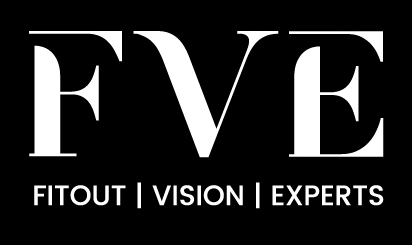 Name: FVE Interiors
Name: FVE Interiors Interior Design
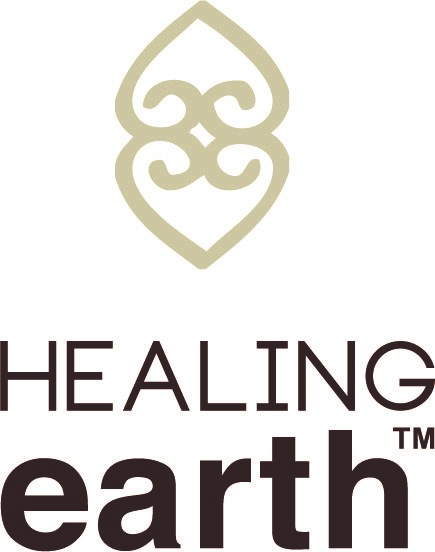 Name: Healing Earth
Name: Healing Earth Hotel Amenities - inspired by Africa
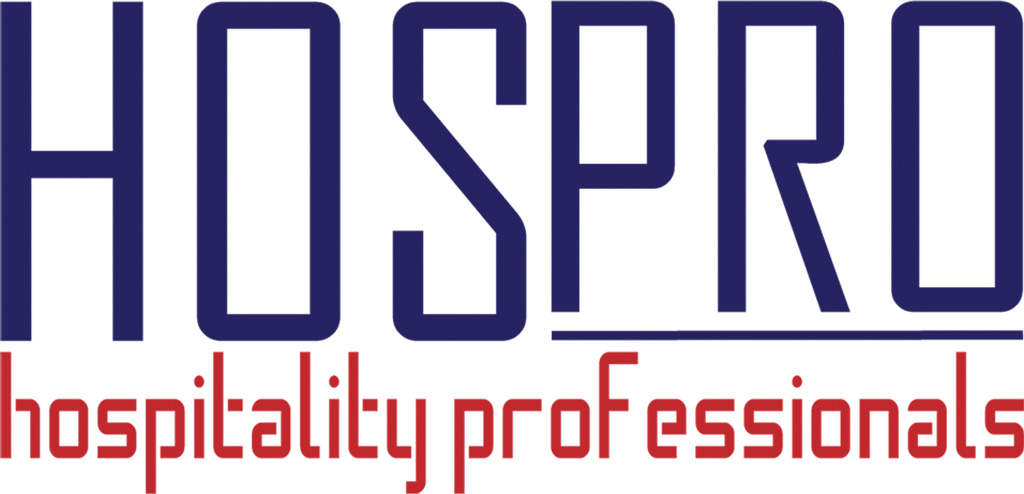 Name: Hospro
Name: Hospro Hospitality Consultancy and Procurement
 Name: Hotel Revenue Management
Name: Hotel Revenue Management Revenue (yield) Management
Online room inventory Distribution & Rates optimisation
Implementation of Best Available Rate (BAR), in conjunction with point 1 & 2
 Name: Indigo Real Estate Agency
Name: Indigo Real Estate Agency Real Estate Agency - Our Associate in Mozambique
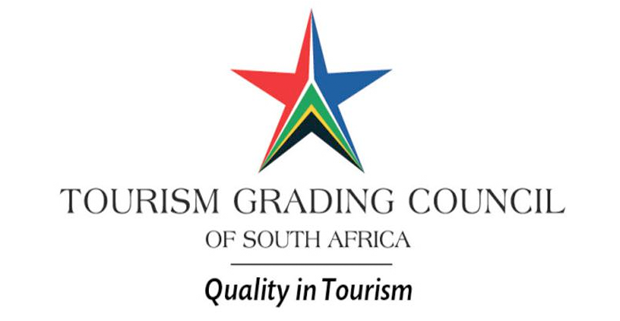 Name: Lisa Dunn - Tourism Grading Assessor
Name: Lisa Dunn - Tourism Grading Assessor Tourism Grading Assessment
 Name: Ooba (Pty) Ltd
Name: Ooba (Pty) Ltd Mortgage Origination
ooba offers you:
 Name: SK Sambu Tours & Transfers
Name: SK Sambu Tours & Transfers Johannesburg based Tours & Transfers Operator
We look forward to being of service to you.
Kind regards
King Sambu
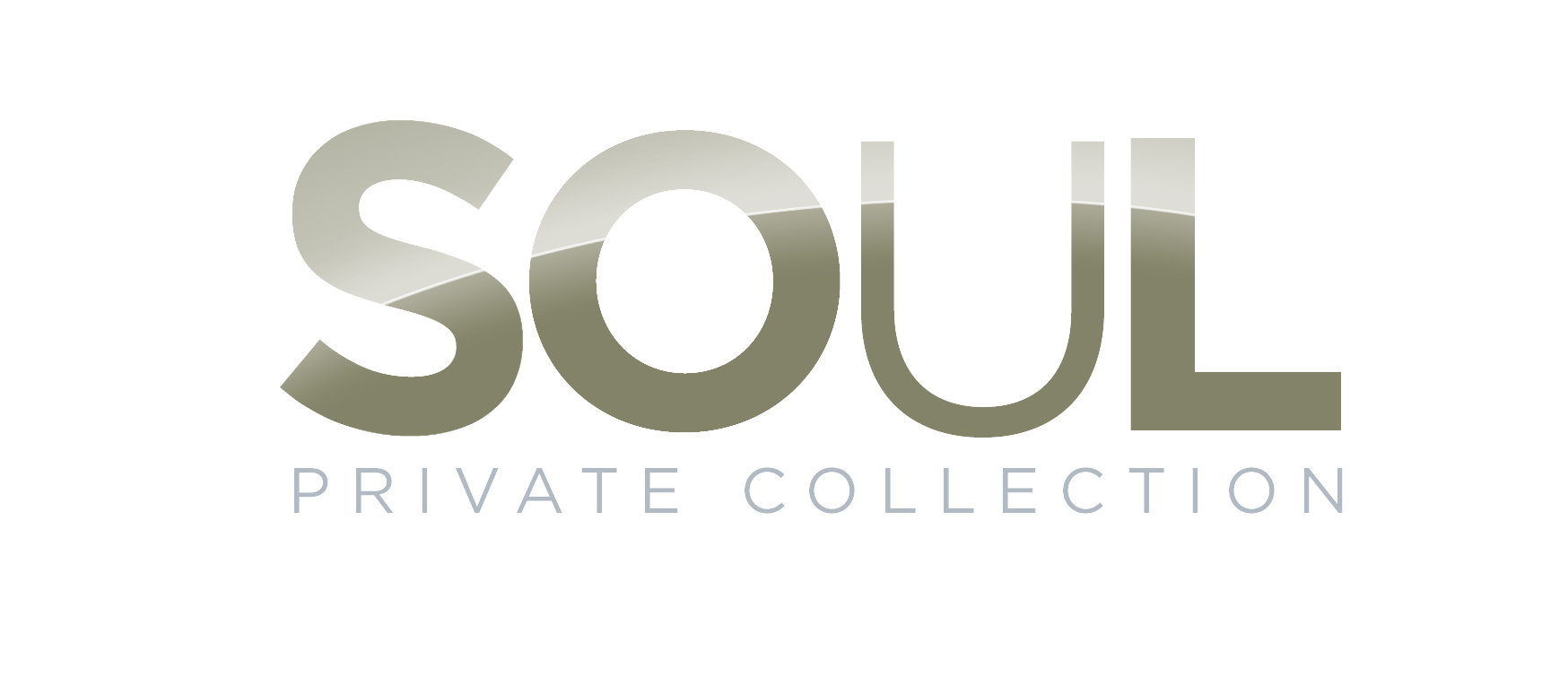 Name: Soul Private Collection
Name: Soul Private Collection Hotel Management and Marketing
 Name: The Dumb Butler Hospitality Suppliers
Name: The Dumb Butler Hospitality Suppliers Hotel Linen Suppliers
LUX Award Winners 2021 for The Best Hospitality Suppliers. We are a proudly South African brand established in 2006.
We Supply:
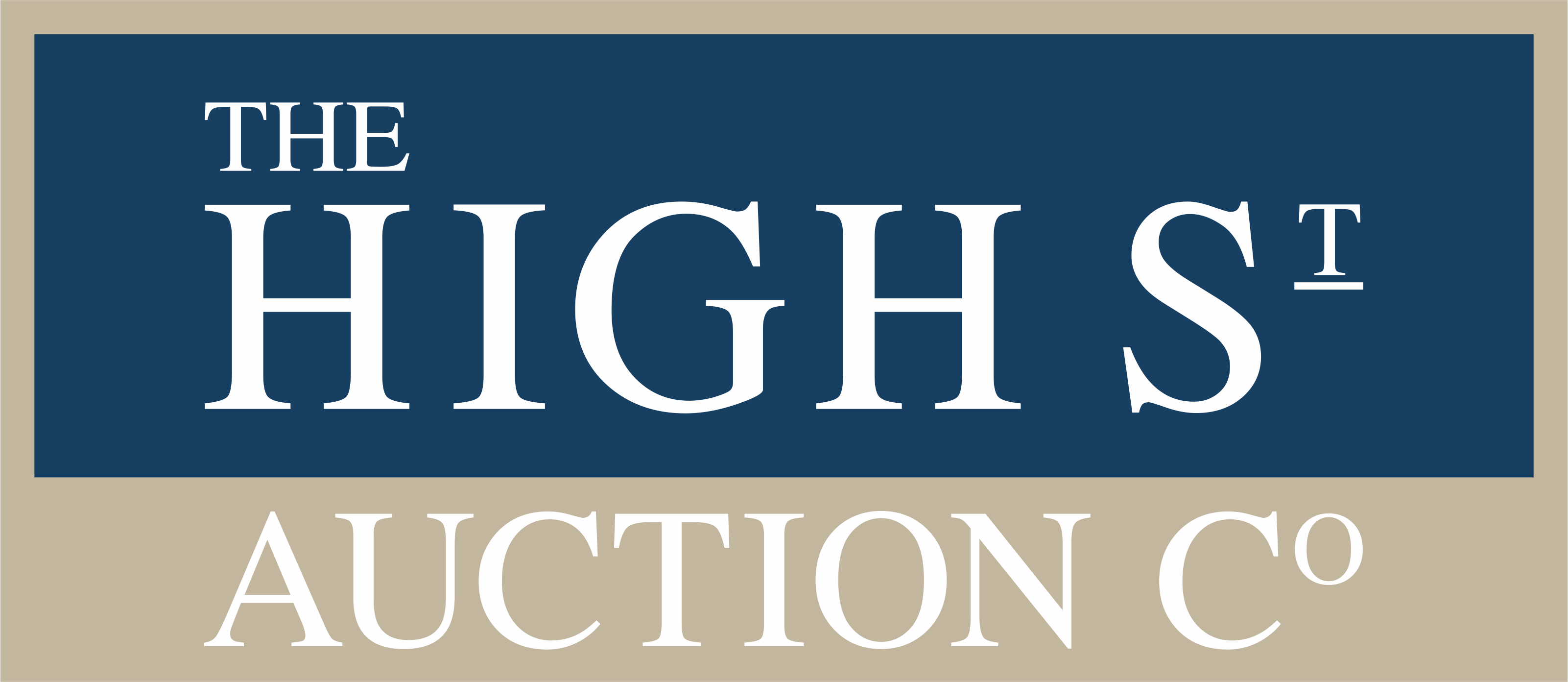 Name: The High Street Auction Company
Name: The High Street Auction Company
Property Auctioneers
Appreciating Property Value
 Name: Touch Point Retail
Name: Touch Point Retail Smart Interior Design
Cliff Jacobs (Nat Dpl Hotel Man (UJ). MPRE. GA Level 5 TEFL) Managing Principal / CEO Exquisite Hotel Consultants (Pty) Ltd Mobile: +27 (0) 84 413 1071 / +27 (0) 61 716 6951 Email: cliff@exquisitehotelconsultants.com Web: https://www.exquisitehotelconsultants.com © All rights reserved Terms and Conditions apply Scroll down to view our Hospitality Properties and Businesses for sale or lease or lease-to-buy or partnership arrangement or management agreement arrangement.